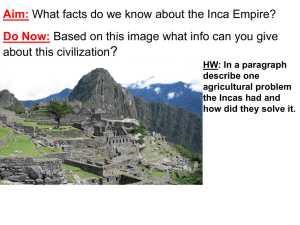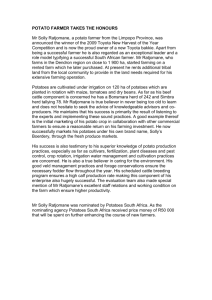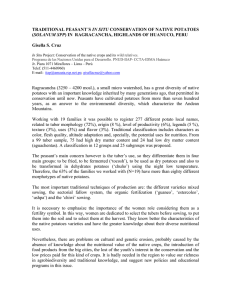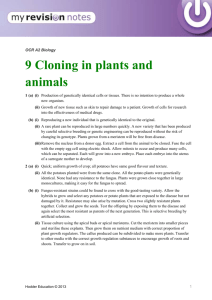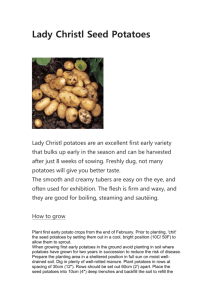Potato grown using traditional Peruvian methods
advertisement
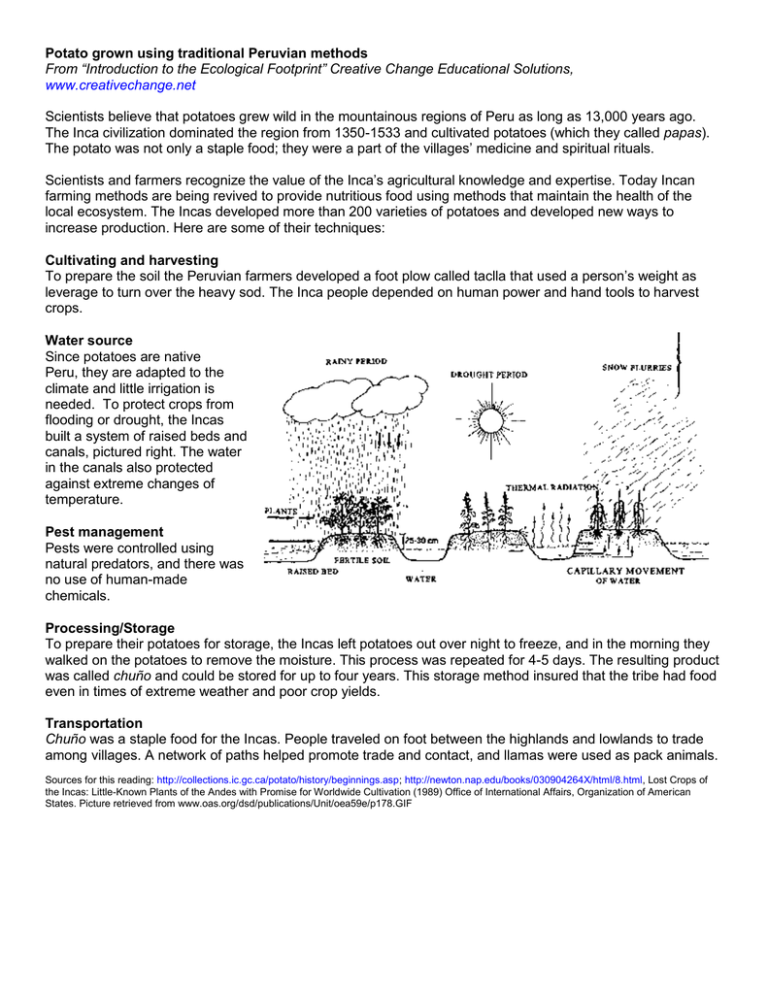
Potato grown using traditional Peruvian methods From “Introduction to the Ecological Footprint” Creative Change Educational Solutions, www.creativechange.net Scientists believe that potatoes grew wild in the mountainous regions of Peru as long as 13,000 years ago. The Inca civilization dominated the region from 1350-1533 and cultivated potatoes (which they called papas). The potato was not only a staple food; they were a part of the villages’ medicine and spiritual rituals. Scientists and farmers recognize the value of the Inca’s agricultural knowledge and expertise. Today Incan farming methods are being revived to provide nutritious food using methods that maintain the health of the local ecosystem. The Incas developed more than 200 varieties of potatoes and developed new ways to increase production. Here are some of their techniques: Cultivating and harvesting To prepare the soil the Peruvian farmers developed a foot plow called taclla that used a person’s weight as leverage to turn over the heavy sod. The Inca people depended on human power and hand tools to harvest crops. Water source Since potatoes are native Peru, they are adapted to the climate and little irrigation is needed. To protect crops from flooding or drought, the Incas built a system of raised beds and canals, pictured right. The water in the canals also protected against extreme changes of temperature. Pest management Pests were controlled using natural predators, and there was no use of human-made chemicals. Processing/Storage To prepare their potatoes for storage, the Incas left potatoes out over night to freeze, and in the morning they walked on the potatoes to remove the moisture. This process was repeated for 4-5 days. The resulting product was called chuño and could be stored for up to four years. This storage method insured that the tribe had food even in times of extreme weather and poor crop yields. Transportation Chuño was a staple food for the Incas. People traveled on foot between the highlands and lowlands to trade among villages. A network of paths helped promote trade and contact, and llamas were used as pack animals. Sources for this reading: http://collections.ic.gc.ca/potato/history/beginnings.asp; http://newton.nap.edu/books/030904264X/html/8.html, Lost Crops of the Incas: Little-Known Plants of the Andes with Promise for Worldwide Cultivation (1989) Office of International Affairs, Organization of American States. Picture retrieved from www.oas.org/dsd/publications/Unit/oea59e/p178.GIF
